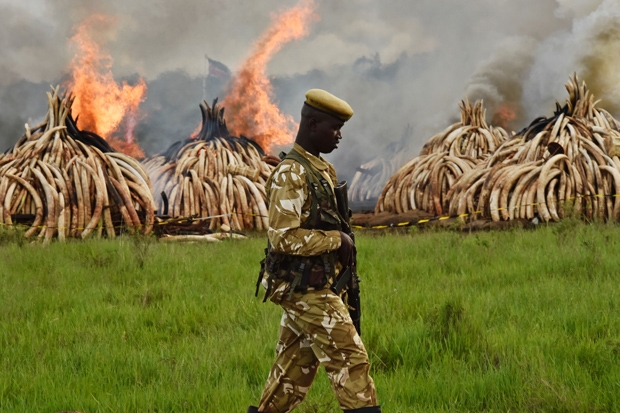To mark World Environment Day this Sunday, Angola will celebrate its zero-tolerance approach to the illegal wildlife trade — the third biggest illegal trade after drugs and arms. Angolans are seeking to rebuild their shattered elephant population in the face of the relentless trade in ivory. But the debate is marked by sharply opposing views, which tend to be centred on such spectacular stunts as the burning of government stockpiles of elephant tusks.
Last month saw the greatest sacrifice of ivory there has ever been. Uhuru Kenyatta, president of Kenya, ignited a pyre 10 ft high and weighing more than 100 tons. Its assembly required the deaths of 6,700 elephants. That’s a lot of money going up in flames, smouldering for a good week until it’s destroyed. No one can calculate exactly how much because the black market in ivory is huge.
The United Nation Convention on Trade in Endangered Species outlawed the international ivory trade in 1989.

Get Britain's best politics newsletters
Register to get The Spectator's insight and opinion straight to your inbox. You can then read two free articles each week.
Already a subscriber? Log in






Comments
Join the debate for just $5 for 3 months
Be part of the conversation with other Spectator readers by getting your first three months for $5.
UNLOCK ACCESS Just $5 for 3 monthsAlready a subscriber? Log in